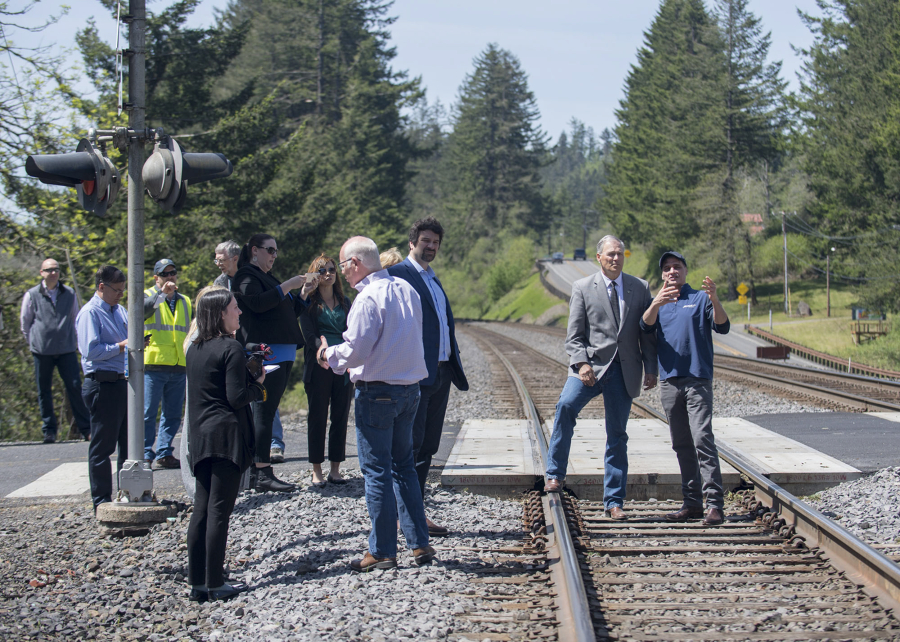SKAMANIA — Gov. Jay Inslee walked over to the rail tracks at a Skamania County rail crossing on a sunny Tuesday afternoon, leaned over and touched one of the rail bolts.
“I’m trying to remember, in Mosier,” Inslee said.
Before the governor could finish his sentence, BNSF Railway spokesman Gus Melonas jumped in with an assurance: the railroad lines in Washington are inspected daily, Melonas said.
The governor was in the Columbia River Gorge to see where the state was spending money to upgrade rail crossings. Soon, the crossing near Butler Loop Road, where oil trains pass, will have flashing lights, active train warning signs and railway arms to stop traffic.
The state has identified 14 rail crossings it would like to improve using money accrued from fines paid by railroad companies to improve the outdated warning signals.
While the focus was on preventative safety measures, the fiery oil-train derailment in Mosier, across the river in Oregon, was still a part of the conversation.
The derailment, nearly a year ago, could have been prevented if a rail inspector from Union Pacific Railroad had spotted a set of broken railroad bolts.
BNSF hauls the majority of crude oil through Washington.
Inslee, who has called on the federal government to strengthen oil train regulations, said although the state has taken steps to improve safety measures around oil-by-rail, there’s more to do.
The governor has pushed for speeding up the transition to safer tank cars, lowering speed limits and tightening requirements for railroad oil spill response plans.
There’s only so much the state can do, however, Inslee pointed out, since the federal government is charged with regulating the rail lines.
The state Legislature passed a measure in 2015 to increase the number of the state’s rail inspectors and to require railroads hauling crude oil to demonstrate an ability to pay for a cleanup.
Railroads are required to show what they have — bonds, stocks, insurance, cash on hand — that they would use to clean up an oil spill. But the state has no power to verify the information given, and railroad companies do not have to disclose their insurance policies.
“It’s not vetted or audited, it’s just their financial forms they submit,” said Jason Lewis, a senior transportation policy adviser with the state’s Utilities and Transportation Commission. “I would not say it’s under the same scrutiny as if it were a certificate of financial responsibility.”
The legislation was watered down in the legislative process, including removing part of House Bill 1449, which would have required railroads to disclose their insurance policies.
Because of the lack of transparency, painting a comprehensive picture of the economic and environmental toll of a derailment is a daunting task. In Oregon, Union Pacific told The Columbian previously the company will absorb all the costs related to the derailment.
But officials would not release specific financial information.
The train traveling through Mosier, Ore., had 94 rail tank cars, and 16 of them derailed. One tanker burst into flames, spreading to an additional two cars.




